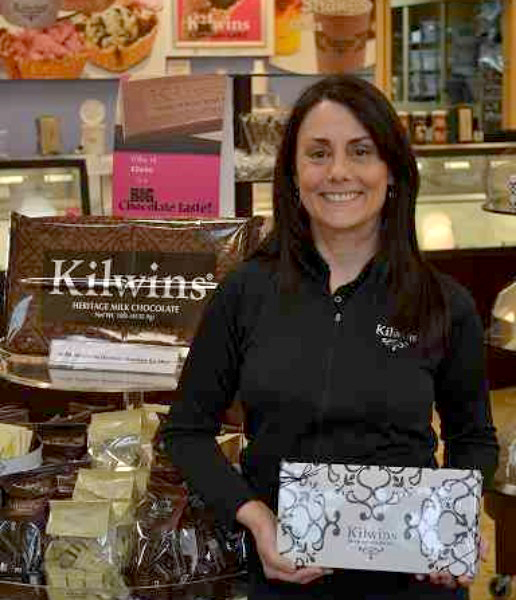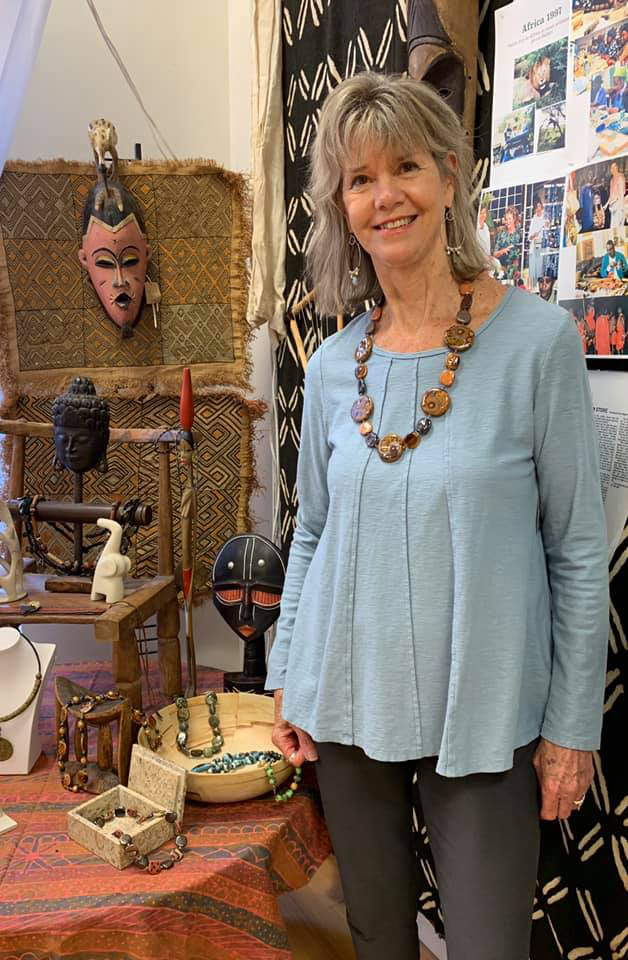While many still need help, other firms feel ‘blessed’
For Janette Desmond, owner of Kilwins, a candy and ice cream shop in Portsmouth, the newest version of the Paycheck Protection Program is a sweet offer, but she’s going to refuse a second helping.
“We qualified, but it’s an ethical thing. I don’t want everyone paying the way for me,” she said But Carole Salyer, co-owner with her husband of Donald Salyer Transport in Bow for the last 40 years, has no such hesitation in applying for another $10,000.
“After working all these years, paying all that we had to pay?” she said. “The big companies were getting it. The little companies should get it too.”
Grappone Automotive is a big company for New Hampshire. The Bowbased auto dealer received $4.25 million last time, but since it has more than 300 employees, it isn’t eligible for another loan under the rules of what’s being called PPP2. Besides, said CEO Larry Haynes, the company is doing better.
“The next round belongs to the restaurants, the smaller retailers, who suffered dramatically more than us,” he said.
Indeed, Great NH Restaurants couldn’t refuse a second helping. The Bedford-based chain runs seven affiliated restaurants — with brands like T-Bones, Copper Door and Cactus Jack’s — which have been approved for $2 million this time around. That’s less than the $4.8 million received in the first round.
“I don’t see a pathway to profitability unless we get back outdoors,” said CEO Tom Boucher. “This is a way to carry us to May 1.”
PPP2 is just one part of the stimulus package signed into law Dec. 27, but it has the largest direct impact on businesses. Last time, it resulted in some $2.5 billion going to about 2,600 Hampshire business.

Janette Desmond, owner of Kilwins in Portsmouth, received a PPP loan last year, but won’t pursue one this time. ‘I don’t think I’ll need it,” she says.
“I feel like I’ve been blessed and helped, and now I want to make it on my own.’ (Manchester Ink Link photo)
The program’s basic premise is the same. It involves a SBA-guaranteed 1% bank loan of up to five years capped at $10 million, but it can be totally forgiven if 60% of the money is spent on compensation and the rest on other approved expenses.
But only businesses with fewer than 300 employees can apply for a second draw, as opposed to a 500 cap in the first round, and they have to show a loss in revenue of more than 25% in a 2020 quarter. Although the program is generous to smaller establishments in the hard-hit hospitality industry — allowing them an extra month of payroll — the loan amount is capped at $2 million.
No sense of urgency
But the biggest difference between the two rollouts may be the changes in the economy and the mood of the country.
Last spring, the pandemic wasn’t as bad — far more people are hospitalized and dying now — but nobody knew what to do, so the entire economy was shut down.
“There was so much uncertainty. Everyone wanted to jump on this. There weren’t a lot of rules and they had to get it fast,” said Steve Lawlor, a CPA and principal at Concordbased Nathan Wechsler & Company.
Congress originally passed a $349 billion package in April. That went in a matter of weeks. Then it passed another package almost as large, and when all was said and done, the SBA handed out $525 billion to 5.2 million businesses. There was $131 billion left when it ended in August, since most businesses who wanted to the participate in the program already had.
There hasn’t been the same sense of urgency in the latest $284 billion rollout.
“We feel there is enough money to go around this time,” said Pam Peterson, coowner of Gondwana, a clothing store and gift shop in downtown Concord. “We are not afraid of not getting funded. Last time, there was a real panic. And big business was able to get most of it. This is more geared for smaller businesses.”
Indeed, in addition to stricter eligibility requirements, the new law also rules out assistance for publicly traded companies, lobbyists and companies with ties to China, though it added 501(c)(6) organizations, such as trade groups and chambers of commerce.

Pam Peterson, coowner of Gondwana in Concord, says she will be applying for another PPP loan, but doesn’t see the same urgency to apply quickly, since ‘we feel there is enough money to go around this time.’ (Facebook photo)
And it was intentionally rolled it out at a slower pace. When it was launched, on Jan. 11, borrowers could only obtain a loan through a Community Financial Institution. But that didn’t help small businesses in New Hampshire, since no CFIs in the state were participating. It didn’t really help too much nationwide as well, since between that rollout and Jan. 17, $5 billion in loans were approved nationwide, only 1.7% of what was allocated.
But on Jan. 15, before the three-day Martin Luther King, Jr. weekend, smaller banks and credit unions — those with less than a billion in assets — could get in on the action, and three days later all banks were allowed to participate.
Among the smaller banks and credit unions was Bedford-based Primary Bank, which was glad to get a “head start,” said Joe Bator, senior vice president.
By Thursday, Primary had submitted 250 loans to the SBA — all but 20 or so involved repeat customers — and 190 were quickly approved. The bank approved a little more than 700 New Hampshire loans last time.
The interest “was nothing compared to last time,” said Bator. “Then, the world had ended, everything was closed.” This time, he added, they’re open and have “to run their day-to-day operations.”
Another reason for the slower pace this goround is that many businesses are waiting to see if their original loan has been forgiven, since “you can’t get your second loan until the SBA decides on the first,” Bator said.
But forgiveness is a slow process. Banks don’t have to make a decision on forgiveness for 60 days, and then the SBA has another 90 days to approve the decision. On Jan. 11, for instance, the SBA proudly announced that it has forgiven $100 billion of loans — less than a fifth of the loans approved in the first PPP.
The SBA did not provide forgiveness breakdowns by state, but the slow place left banks and customers a little frustrated.
None of Primary Bank’s businesses have been denied forgiveness so far, but of the 462 decisions sent by the bank to the SBA thus far, some 398 have been forgiven. Some are recent, but others have been held up for months.
Grappone, for instance, submitted its forgiveness application in September, and its bank forwarded the application to the SBA on Nov. 13. The company is still awaiting a decision, which is frustrating, since it still has to carry that on its books as a loan.
Another difference this time around: both the banks and SBA are better prepared. There are fewer questions and fewer problems getting answers from the SBA.
“It was much more manageable,” said Sheryl McQuade, northern New England regional president of TD Bank, which handled more than 3,500 New Hampshire loans last time.
It has been busy at Bank of New Hampshire, said CEO Chris Logan, “but it certainly is not what it was in the first round.” The bank, which issued 873 PPP loans the first time, is running about 24% of the rate of last year.
Many customers haven’t been able to meet the 25%, one-quarter drop in income. “Many people are more at 15% or 20%,” Logan said.
Desmond said Kilwins would easily make that 25% threshold. The store started off last year 27% up, but when Covid hit, she was down by as much 70%. She crawled back “claw by claw” to merely 10% down, and she thinks she can now hang on until the summer. “I don’t think I’ll need it,” she said. “I feel like I’ve been blessed and helped, and now I want to make it on my own.”
But many businesses still want, or need, a helping hand.
Donald Salyer Transport has “gone down the tubes” partially because of Covid and partially because of a fallout with a business partner, said Carole Salyer. The company was just hanging on when the pandemic hit.
After the Salyers used up their $10,700 PPP loan to get through eight weeks, both went on expanded unemployment for business owners. That has kept the business going, she said, but not enough to produce any income. So now they plan to go off unemployment and go for a PPP loan — “since you can’t do both” — until business picks up again in the spring, “If they say, ‘Yes, you guys qualify,’ then, yes, we’ll take it,” she said.
So will Gondwana. The first $75,200 loan enabled her to pay her staff — three full-timers and a few part-timers — to pivot to online sales. Before the pandemic, she just sold gift cards online. Now, she uses Facebook Live to advertise weekly shipments, and sets up Zoom visits, allowing customers to “try on” clothes by seeing how they fit on staffers with a similar build.
“I could pick any quarter,” said Peterson, “but we were worse off in the second quarter. We were close to 50%.”
“We fully intend to apply,” said Ed Butler, co-owner of The Notchland Inn in Hart’s Location, which took out a $34,000 loan the first time. “That helped us survive and get us through very difficult times when we were closed.”
Things got better over the summer, but after the fall, they dropped “precipitously” and are still off, but now it looks like 15% rather than 60%. With another PPP installment, he thinks he’ll make it until the spring.
That’s also the hope of Boyle Energy Services & Technology Inc. The Merrimack firm doesn’t just ship, but must travel to install its equipment at power plants to all parts of the world. But travel has been mostly out of the question in the pandemic.
“We had the worst year ever. We only worked 200 man-hours in the field, and it’s usually tens of thousands,” saidCEO Michael Boyle. For instance, it just got awarded a project in Indonesia, but then the country shut down its borders. “But by the grace of the American people, we are still here.
We survived with government programs.”
It wasn’t just the $558,000 PPP loan, enabling Boyle to keep all of his 25 workers on during the first few months, but other SBA loans and New Hampshire’s Main Street Program that enabled him to keep paying the health benefits of the quarter of his staff he had to furlough. He’s hoping to just stay in business until borders open up, he said.
“We have zero revenue now, but we have a tremendous backlog. If we can hang on, we are in good shape.”
Bob Sanders can be reached at bsanders@nhbr.com.